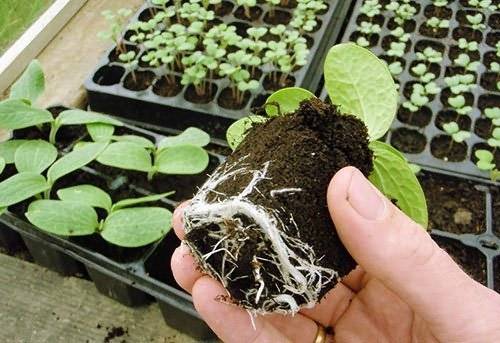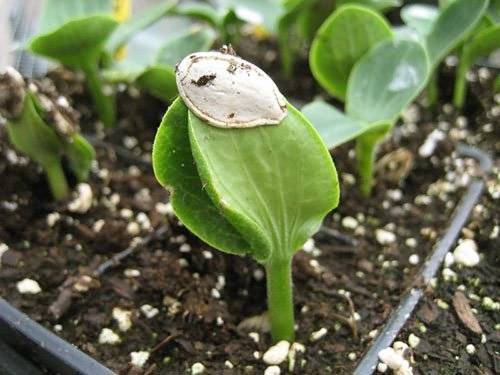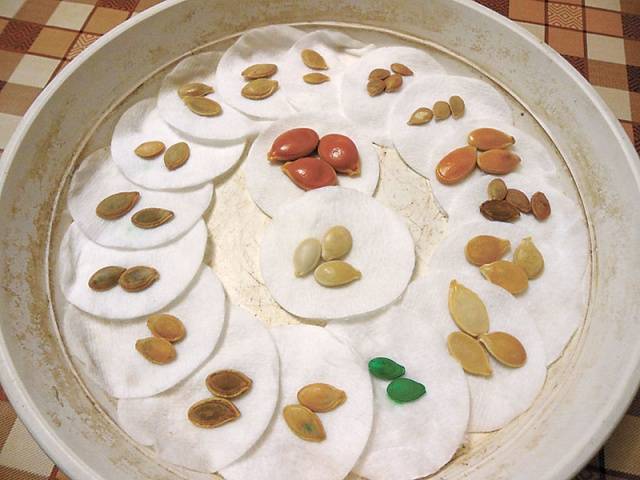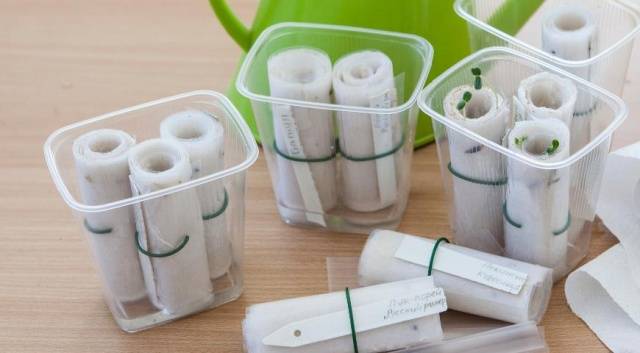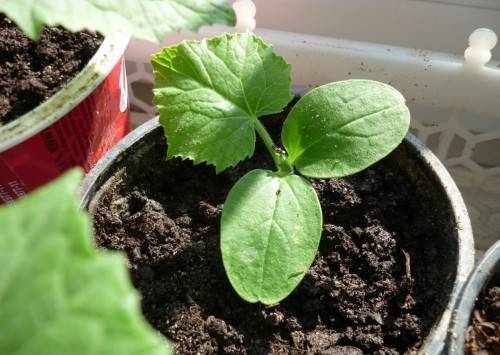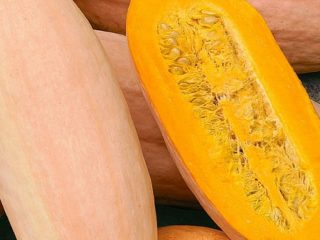Content
Many gardeners grow pumpkins on their plots. This berry, and from the point of view of biology, it is a berry, has unique nutritional and medicinal properties. Agricultural technology does not represent its complexity, even novice gardeners can grow a pumpkin. In addition, it has the most valuable property - many varieties can be stored without loss of quality until spring.
Why seedlings are needed
In the southern regions, there are no problems with growing pumpkin, any, even the most late-ripening vegetable, will ripen here. In the middle lane and in other regions with short and cool summers, even early-ripening pumpkin varieties may not ripen when sown in the ground. And unripe pumpkin will not be stored. It turns out that the work of the gardener went down the drain, the long-awaited supply of vegetables for the winter will not appear. In all cool regions there is an excellent way out of the situation - growing pumpkin seedlings. All vegetables of the pumpkin family are easily stretched when planted in an apartment. How to plant pumpkin seedlings at home in order to get strong and well-developed plants is described in this article.
Sowing dates
To understand when to plant a pumpkin for seedlings, you need to figure out what it should be at the time of planting.
Experienced gardeners believe that pumpkin seedlings should have 3 true leaves before planting... As a rule, this happens if she has been growing indoors for a month. You can limit yourself to 3 weeks of pumpkin cultivation if the deadline is tight. It is not recommended to keep pumpkin seedlings in the apartment for more than a month. A strong plant with a developed root system will become cramped in any pot.
By the time the grown pumpkin seedlings are planted, the soil and air must meet the following requirements:
- at a depth of 10 cm, the soil must have at least 15 degrees of heat;
- the average daily air temperature should be the same.
Such weather conditions in different regions come at different times. But it is from the moment the soil is ready for planting the pumpkin that the planting time needs to be calculated. Each region has its own timing of the onset of return frosts and the arrival of stable heat. Let's consider them in more detail for each region based on long-term observations.
Central black earth
The guaranteed frost-free period here starts from May 10th. Seedling pumpkin is sown in early April.
Middle lane
Frost will definitely not come starting from June 10. Therefore, the question of when to plant a pumpkin for seedlings in the Moscow region can be answered: at the end of the first decade of May.
Ural and Siberia
To understand when to plant pumpkin for seedlings in Siberia or the Urals, consider the features of the climate in this region. Summer is even shorter here. The frost-free period begins in mid-June. Therefore, earlier than in the second decade of May, sowing pumpkin in the Urals and Siberia is not worth it.
Many gardeners are guided by the lunar calendar when sowing various crops.
We sow, checking with the moon
If you analyze the lunar calendar, you can get the following answer to the question - when to plant a pumpkin for seedlings in 2018:
- the best days are in April: 27-29, permissible - 17-18 and 21-22 April, but in this case the fruits will not be suitable for seeds;
- in May it will be possible to do it 1, 4-6, 9-11 and from 24 to 28.
We sow pumpkin seeds on seedlings
In order for the seeds to sprout quickly, and the sprouts to be healthy and strong, they must be properly processed.
Seed preparation
- We select pumpkin seeds visually and to the touch: they should be large and plump, not damaged.
- We heat the selected seeds for 2 to 3 hours in warm water, its temperature should not exceed 50 degrees.
- For all pumpkin crops, seeds must be soaked before sowing, sow those that have already been nailed. The easiest way is to wrap them in a damp cloth and hold them in the room until they are pecked.
- If you want to increase the cold resistance of plants, which is especially important for butternut squash, you can hold them on the bottom shelf of the refrigerator without removing them from a damp cloth for 3 to 5 days.
To correctly calculate the sowing time, you should know when to germinate pumpkin for seedlings. If the seed has good germination, the first seeds that hatch can be observed after 4-5 days.
It may seem strange to you, but the first time pumpkin seedlings can spend in diapers.
Seedling pumpkin in a snail
The method of planting seeds in diapers has already been tried by many gardeners, so tomatoes are often sown. A regular plastic bag is used as a diaper. The method of growing pumpkin seedlings in a snail is not much different from it. Let's consider it in all details.
- For sowing, you can use both dry and treated in a solution of a growth stimulant pumpkin seeds.
- We need plastic bags or just strips of old garden film.
- You also need toilet paper, which can be folded in 2, but preferably in 4 layers.
- The height of a strip from a film or a bag should be the same as that of a roll of toilet paper, the length can be arbitrary.
Sowing technology:
- lay out a strip of film on the table;
- unwind 2 rolls of toilet paper from above so that layers are obtained, they should lie on top of the film;
- you can use ordinary settled water to wet toilet paper, but the best result is obtained when using a growth stimulant solution;
- spread the pumpkin seeds from one end of the toilet paper at a distance of 4 to 5 cm. The seeds must be oriented so that the spout is directed downward.
- cover everything with one or two layers of toilet paper to be moistened. The paper should be damp, but not wet, so pouring water on it should not be best moistened with a spray bottle.
- we twist the film with a snail roll;
- we put the roll in any container of a suitable height - the side where the seeds should be at the bottom, pour a little more than a centimeter of water on the bottom of the container;
- cover the structure with a bag or cling film;
- put in warmth.
Now it remains to wait for seedlings, they may appear on the fourth or fifth day. We put our snail on a light and warm windowsill. Do not forget to add water from time to time, keeping its level of 1 cm. Young plants will need a transplant when they have a second real leaf. With this growing method, the roots are not intertwined or damaged when placed in a cup filled with soil.
You can watch the video in more detail about this interesting method of sowing seeds:
Soil and sowing containers
Like all vegetables of this family, pumpkin has a negative attitude to damage to the root system, and very poorly tolerates transplantation. Therefore, the best way out is to sow seeds directly into individual containers.
The diameter of the pot depends on the chosen method of growing seedlings:
- you can first plant pumpkin seeds in pots with a diameter of about 6 cm, and a couple of weeks after germination, transfer them to pots with a diameter of 14 cm;
- you can plant the pumpkin right away in a large pot, but pour the earth only up to half, adding it as the plant grows.
If pumpkin seeds are going to be planted in store soil, you should give preference to one that is intended for cucumbers. It is not difficult to prepare potting mix yourself, guided by the following recipe:
- one part of humus and rotted, but in no case fresh, sawdust;
- two pieces of peat.
For every 3 kg of prepared soil, add three teaspoons of complete mineral fertilizer.
Sowing seeds
You need to know how to properly plant a pumpkin for seedlings. The depth of sowing pumpkins in the open field is from 8 to 10 cm. In a pot, they are sealed no deeper than 3 cm, while the root of the seeds that have hatched should look down. The soil should be moist, but not waterlogged. If you cover the pots with foil, seedlings may appear as early as 4-5 days.
Further care
The pumpkin is very fond of warmth and light, so a place for seedlings is allocated on the windowsill of the south window. So that in the first days after germination the seedlings do not rapidly stretch, the temperature for it should not exceed 18 degrees during the day and 13 degrees at night. In the future, the optimal daytime temperature is up to 25 degrees and up to 15 degrees - at night.
Watering pumpkin seedlings needs moderate and only warm water. Plants need to be fed twice with full mineral fertilizer and must be hardened before planting. To do this, the seedlings are taken out into the street, gradually increasing the time spent in the fresh air.
Growing pumpkin seedlings indoors allows you to plant even late-ripening nutmeg varieties in the middle lane and get a good harvest. In the Urals and Siberia, when grown from seedlings, you can get a guaranteed yield of early and mid-season varieties.

